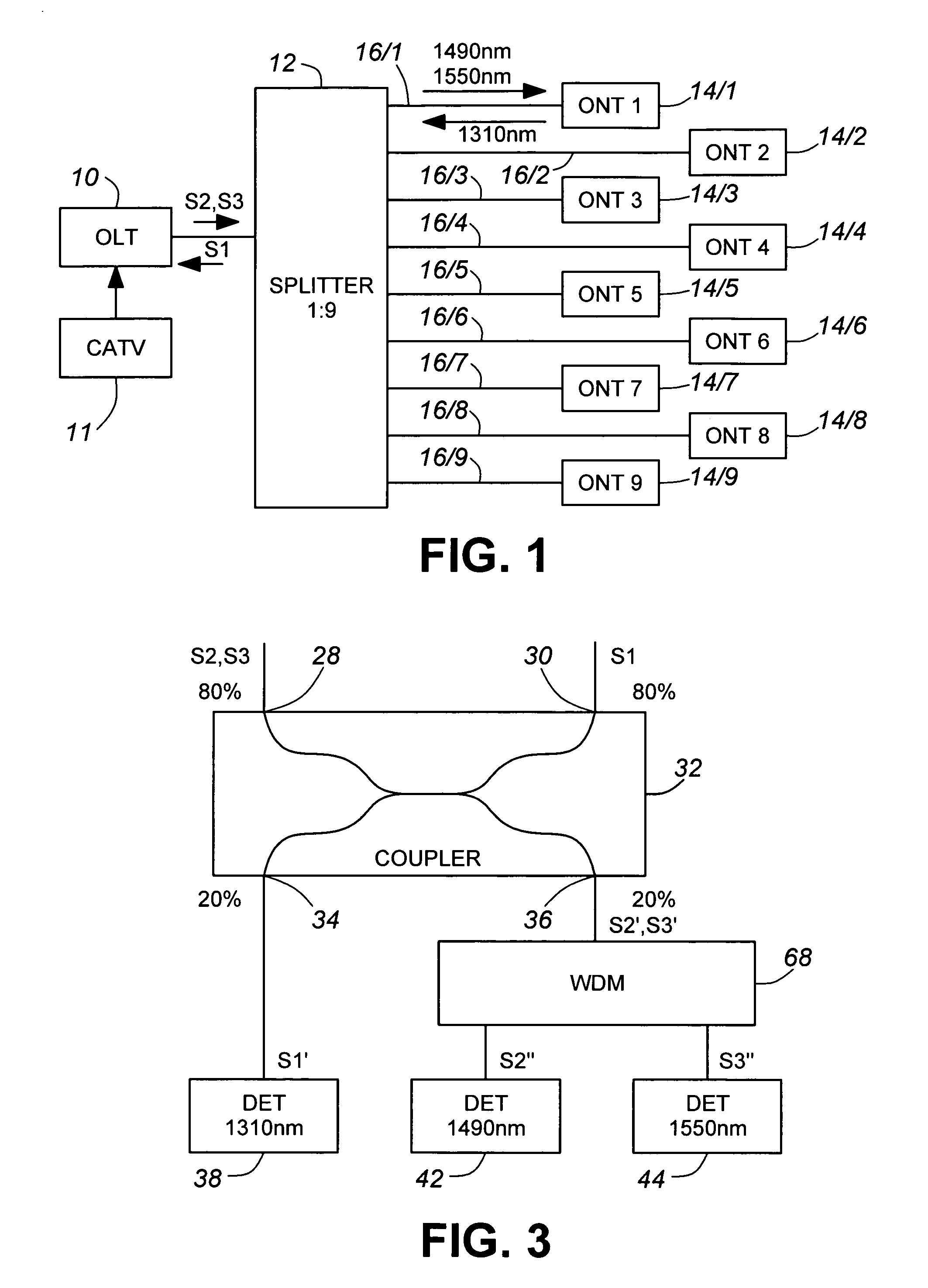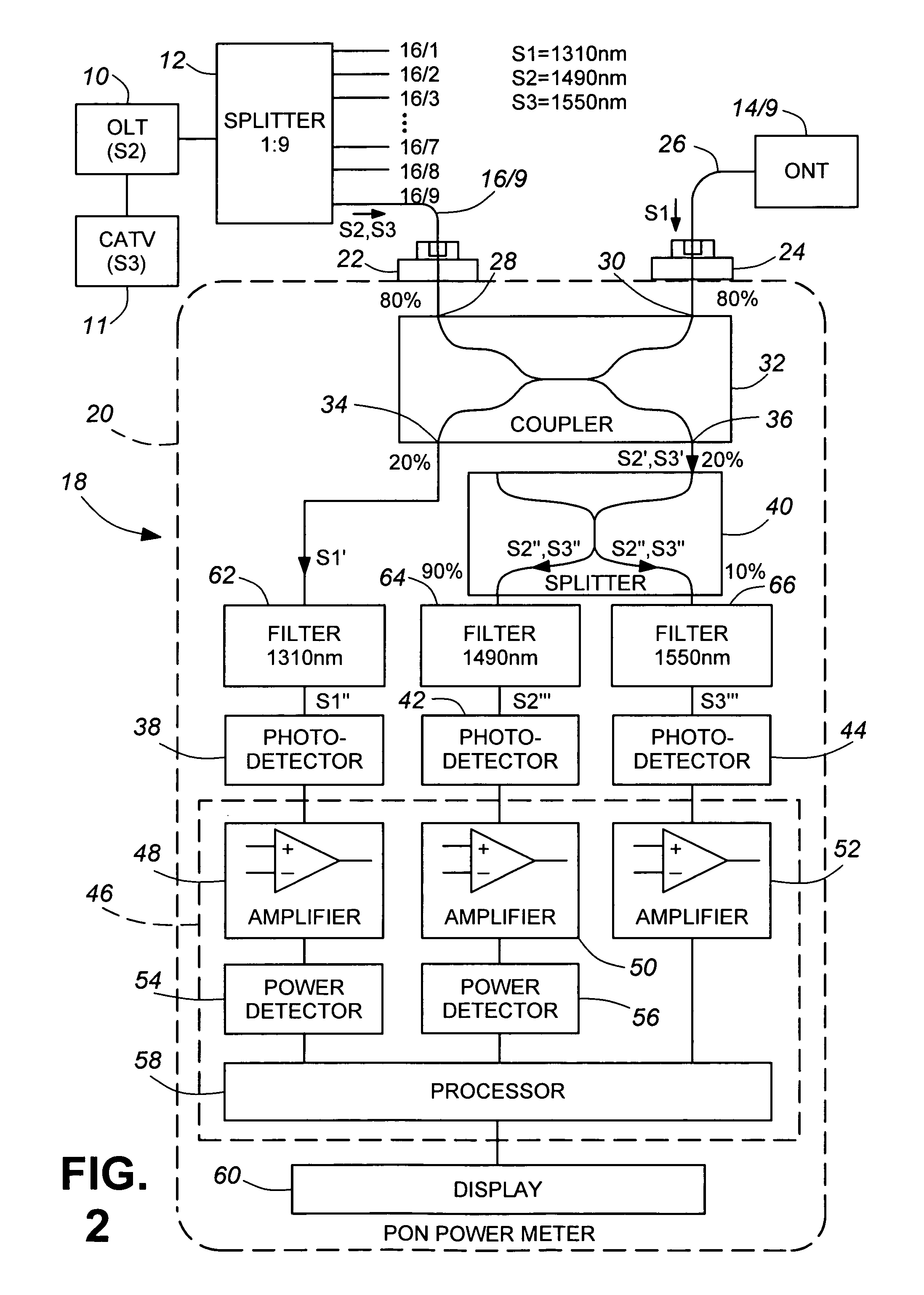Method and apparatus for testing optical networks
a technology of optical networks and optical networks, applied in the direction of transmission monitoring/testing/fault-measurement systems, transmission monitoring/testing/measurement systems, structural/machine measurement, etc., can solve the problems of large instrument cost and complicated routine field application,
- Summary
- Abstract
- Description
- Claims
- Application Information
AI Technical Summary
Benefits of technology
Problems solved by technology
Method used
Image
Examples
Embodiment Construction
[0035]A portion of a passive optical network shown in FIG. 1 comprises a first element in the form of a central office optical line terminal (OLT) 10 coupled by a 1:9 splitter 12 to a plurality of other elements in the form of optical network terminals (ONT) 14 / 1 to 14 / 9, each coupled to a respective one of the nine ports of the splitter 12 by one of a corresponding plurality of optical waveguides 16 / 1 to 16 / 9. (It should be noted that, although nine terminals and a nine-port splitter are shown for convenience of illustration, there could be more or fewer in practice.) The terminals use asynchronous transfer mode (ATM) or similar protocol to encode the downstream (OLT to ONTs) and upstream (ONTs to OLT) digital data signals. OLT 10 broadcasts to the ONTs 14 / 1 to 14 / 9 downstream data signals (S2) at a wavelength of 1490-nm and downstream cable television (CATV) signals (S3) at a wavelength of 1550-nm and, in known manner, encodes the 1490-nm signals for synchronization purposes, the ...
PUM
| Property | Measurement | Unit |
|---|---|---|
| wavelength | aaaaa | aaaaa |
| wavelength | aaaaa | aaaaa |
| wavelengths | aaaaa | aaaaa |
Abstract
Description
Claims
Application Information
 Login to View More
Login to View More - R&D
- Intellectual Property
- Life Sciences
- Materials
- Tech Scout
- Unparalleled Data Quality
- Higher Quality Content
- 60% Fewer Hallucinations
Browse by: Latest US Patents, China's latest patents, Technical Efficacy Thesaurus, Application Domain, Technology Topic, Popular Technical Reports.
© 2025 PatSnap. All rights reserved.Legal|Privacy policy|Modern Slavery Act Transparency Statement|Sitemap|About US| Contact US: help@patsnap.com



